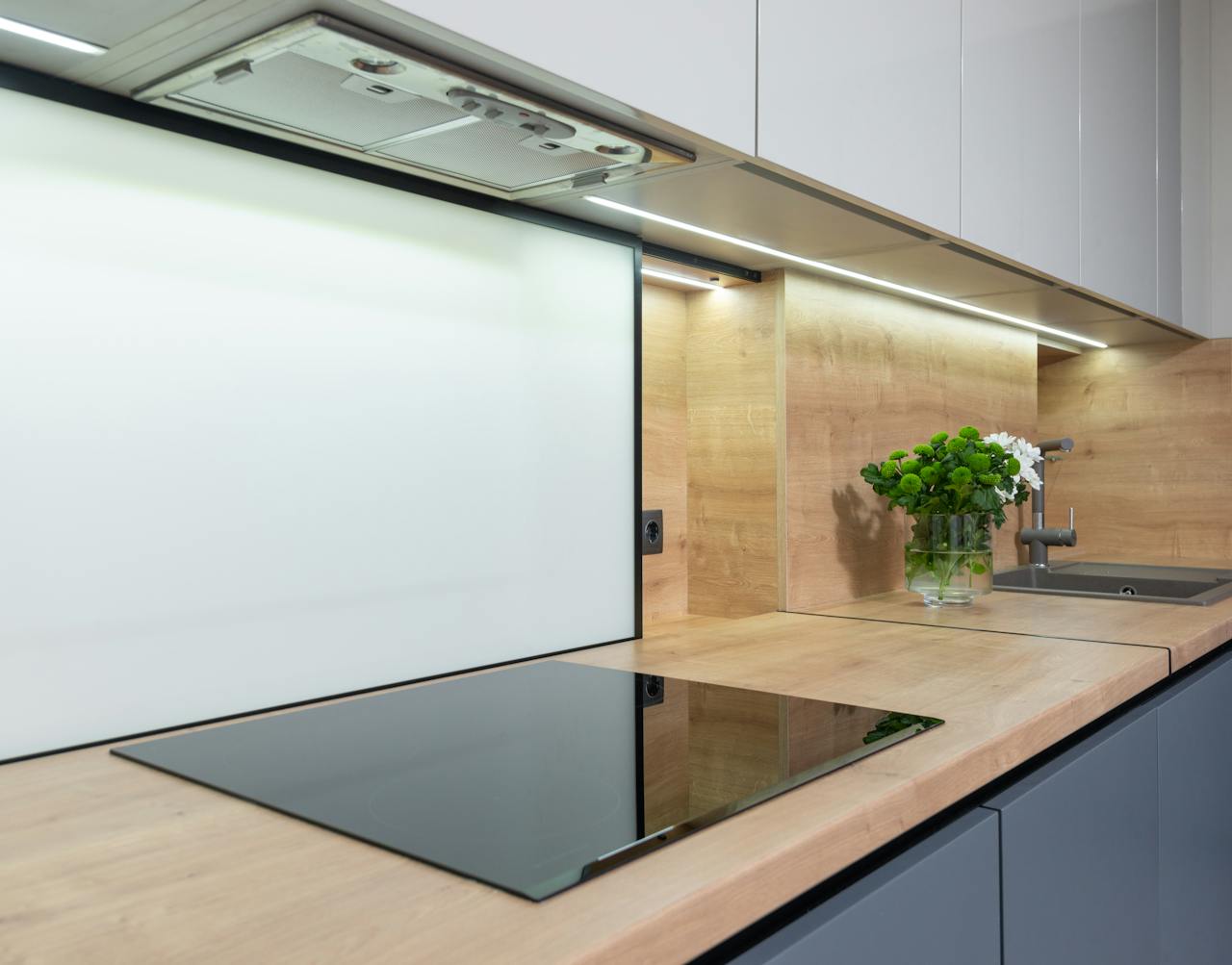When it comes to designing your kitchen, you have various options for the type of cooktop to install. Among the most popular choices are ceramic and induction hobs. These cooktops, while they seem similar, have distinct features that affect their cooking performance. You might wonder, how exactly do ceramic hobs contrast with induction hobs?
This article aims to guide you through the differences between these two prominent types of cooktops. We will delve into how they work, their energy efficiency, the kind of cookware they require, and their control features.
Have you seen this : What type of bread bin best preserves the freshness of homemade bread?
The working principle: Heating method
Ceramic and induction hobs differ significantly in their heating method. This distinction is crucial as it impacts how your food cooks and how much energy you consume in your kitchen.
Ceramic hobs, also known as electric cooktops, use radiant heat to cook food. These hobs have coiled metal elements beneath the glass-ceramic surface. Once you turn on the heat, the elements start to glow, producing heat, which then transfers to the cookware placed on the surface.
This might interest you : Explore exceptional barolo: a journey through unique flavors
On the other side, induction hobs employ magnetic fields to generate heat. When you power an induction hob, it creates an electromagnetic field that interacts with the iron in your cookware. This interaction generates heat, which then cooks the food inside the cookware. Note that the induction surface itself does not heat up; the heat directly comes from the cookware.
Energy efficiency: Induction versus Ceramic
Energy efficiency is a critical factor when considering the cooking performance of a hob. Induction cooktops are generally more energy-efficient compared to their ceramic counterparts.
For ceramic hobs, the heat transfers from the heating elements to the ceramic surface and then to the cookware. During this process, there is a considerable amount of heat loss. In contrast, induction hobs produce heat directly inside the cookware, minimizing energy waste.
Research indicates that induction hobs utilize approximately 90% of the total energy they consume. In contrast, ceramic hobs use roughly 65-70%. As such, induction cooktops are the best choice if you are looking to save on energy bills.
Cookware compatibility: Pan and Pots for Induction and Ceramic Hobs
The type of pans and pots you use influences the cooking performance of your cooktop. Not all cookware is compatible with induction hobs.
Induction cooktops require cookware with magnetic properties, such as cast iron and some stainless steel types. This is because the hob generates a magnetic field that needs to interact with the iron in the cookware to produce heat.
Ceramic hobs, however, are not selective about the cookware they work with. They can heat any pan or pot, regardless of the material, as long as it has a flat bottom for effective heat transfer.
Control features: How accurate is the heat control?
Heat control is a vital aspect of cooking. With precise heat control, you can achieve the desired results from your recipes.
Induction cooktops offer superior heat control. They react instantly to changes in heat settings. If you reduce the heat from high to low, the temperature change is immediate. This level of control is essential when you need to cook at precise temperatures.
Ceramic hobs, on the other hand, are slower in responding to heat changes. They take longer to heat up and cool down, making it tricky to achieve exact cooking temperatures.
In sum, while both ceramic and induction hobs are viable options for your kitchen, they present distinct differences in their heating method, energy efficiency, cookware compatibility, and heat control. Each has its advantages and drawbacks, and the choice between the two will depend on your cooking needs and preferences. Induction hobs, with their high energy efficiency and superior heat control, offer more advanced cooking performance. However, ceramic hobs are more versatile with cookware and could be a better choice for those not ready to replace their current pots and pans.
The convenience aspect: Cleaning and Maintenance
In every kitchen, cleanliness is a top priority. For this reason, it’s crucial to consider how easy it will be to clean and maintain your cooktop.
Ceramic hobs, with their smooth glass-ceramic surface, are quite easy to clean. A simple wipe with a damp cloth or a specialized ceramic hob cleaner is usually all it takes to get rid of spills and stains. However, they can be prone to scratches if rough or abrasive cleaning materials are used.
Maintaining a ceramic hob also involves regularly checking the heating elements. Over time, these elements may need replacing, which can be a bit complex as they’re located beneath the glass-ceramic surface.
On the other hand, induction hobs are equally easy to clean due to their flat, sleek surface. But the additional advantage they have is that since they heat the cookware directly, the surface around the cookware stays relatively cool. This aspect prevents spills from burning onto the surface, making it even easier to clean.
In terms of maintenance, induction cooktops have fewer components that can wear out or break. However, if a repair becomes necessary, it may be more costly due to the sophisticated technology involved.
Overall, both options are easy to clean, but induction hobs have a slight advantage due to their cool surface, which prevents burns and stains.
Safety considerations: Induction vs Ceramic Hobs
Safety is an essential factor when it comes to selecting a hob.
Induction hobs are regarded as safer than ceramic hobs. Since the heat is generated directly in the pan, the hob’s surface remains comparatively cool, reducing the risk of burns. Induction hobs also have a safety feature that detects whether there’s a pot on the hob. This means if there’s no cookware present, the hob will not activate, further reducing the chance of accidental burns.
Ceramic hobs, while not as advanced in safety features, do have ‘hot hob’ indicators that show when the hob is still hot to touch after use. However, the risk of accidental burns is still higher compared to induction hobs due to the heat lingering on the ceramic surface.
Conclusion: Choosing between Induction and Ceramic Hobs
In conclusion, both induction and ceramic hobs have their unique sets of advantages, with the decision likely to come down to your specific needs and preferences.
Induction hobs stand out in terms of energy efficiency, precision control, safety, and ease of cleaning. However, they require specific cookware and might have potentially higher repair costs. On the flip side, ceramic hobs are versatile in terms of cookware compatibility, easy to clean, and may have lower maintenance costs, but they lack the energy efficiency and precision control offered by induction cooktops.
Ultimately, you should consider your lifestyle, cooking habits, and budget when choosing between an induction and ceramic hob. Whichever choice you make, both options offer reliable and efficient cooking possibilities for your kitchen.






